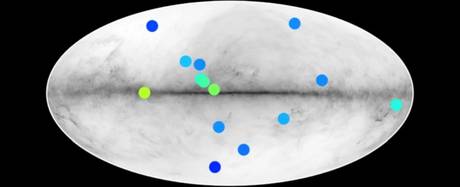In the Milky Way there may be at least 14 anti-stars, that is, stars made of antimatter, the counterpart to ordinary matter.
This is indicated by the analysis of the map of the galaxy at gamma rays, published in the journal Physical Review D by researchers of the French Institute for Research in Astrophysics and Planetology (Irap), led by Simon Dupourqué.
If the hypothesis were confirmed, it could help explain one of the mysteries of the cosmos: what happened to antimatter, which immediately after the Big Bang was present in quantities comparable to that of ordinary matter.
The map was created thanks to one of the two instruments of the Fermi space telescope, the Large Area Telescope (Lat), in the management of which Italy participates with the Italian Space Agency (Asi), the National Institute of Astrophysics (Inaf). and the National Institute of Nuclear Physics (Infn). The scholars have analyzed just under 6,000 signals collected by Fermi in ten years.
The stars made of antimatter, the Irap experts explain, could have been born at the dawn of the universe, and hide in the halo around the Milky Way. The study authors calculated the possible number of anti-stars in the Milky Way, roughly one in every 300,000 common stars.
Fermi data indicate that the 14 possible candidates have emissions comparable to those expected for antimatter stars. However, the authors point out, this is still a hypothesis for the moment, and further studies will be needed to confirm it. The possible anti-stars, in fact, the Irap researchers specify, could actually be sources of gamma rays of different nature, such as pulsars or black holes.
Map of the 14 possible antimatter stars in the Milky Way, based on data from the Fermi space telescope (source: S. Dupourqué / IRAP)
Patrizia Caraveo, Inaf scientific manager for Fermi / Lat. "To reveal even a single celestial object made from antimatter would be extraordinary. However - he explains - as the great American astronomer Carl Sagan said, 'extraordinary claims require extraordinary evidence', and here the evidence is anything but extraordinary". The 14 possible candidates, Caraveo concludes, "could be much more normal celestial objects, such as neutron stars or black holes. There is no convincing evidence that they are antimatter stars."

